How to care for raspberries in the fall: watering, feeding, pruning and preparing for winter
A rare garden plot does without a raspberry bush. This sweet berry is very popular among the people of our country. Compotes, jams are made from it, eaten with milk and cream, and frozen. In this case, you can use any part of the plant, they all have medicinal properties. To harvest raspberries was rich, she needs to be properly looked after.
Content:
- Watering, feeding, pruning bushes
- Preparing raspberries for winter
- The best raspberry varieties to grow in the garden
- Prevention of pests and diseases
Watering, feeding, pruning bushes
Reproduction of raspberries usually does not have to be dealt with separately, it reproduces by shoots. Young shoots begin to bear fruit in the second year, and then die off and give new shoots. However, if the growth is not controlled, it will grow too much, which will negatively affect the yield.
In order for the raspberry harvest to please every year, you need to know how to care for raspberries in the fall, how to properly prune and water them.
Basic Rules:
- Raspberry bushes should be planted in rows with a distance of about 2 meters between them. Each row can be fenced off. This is necessary to avoid unwanted shoot propagation. In each row, 7 healthy shoots are left, and dried and damaged ones are cut off.
- Stems raspberries needs to be pruned to increase yield... In most varieties, the middle of the bush is the most productive part, so the top can be safely cut, leaving the bush no higher than 170 cm.
- Raspberry needs feeding... Organic fertilizer they are brought in, as a rule, in the fall. Peat, humus, urea can be used as fertilizers. If the shoots grow poorly, you can fertilize raspberries in the spring.
- Raspberry roots are shallow, so you need to loosen carefully, no deeper than 10 cm.It is better to do this after fertilizing or glaze... Raspberries can "roam" because the roots grow very strongly. To keep the garden in its original state, you can dig in small plates along the edges of the raspberry row.
- Watering must be timely. In spring, raspberries can be watered not too abundantly, but if the summer is dry, hot, you need to water it regularly. The most important period for watering is in the fall. At this time, the bushes need to be well filled with water so that the earth is properly saturated.
- Pruning can be carried out both in early spring and after harvest. It is necessary not only to shorten the shoots that bear fruit, but also to remove excess root growth, which does not yield a crop, but only takes nutrients and moisture. Pruning in spring is done before budding.
Preparing raspberries for winter
Autumn comes a special time leavingso that the raspberries survive the cold. Preparation of raspberries for winter begins at the end of September before the onset of cold weather.
As a rule, before winter, raspberry branches are bent to the ground and tied to each other to avoid freezing of the shoots.
But before that, it is necessary to remove all dry branches, excess young growth and leave only healthy fruiting branches. It is advisable to shorten the remaining healthy shoots by at least 10 cm. If the bush has grown a lot, you can cut more.If you want a lot of fruits and they are large, you should not leave a large number of bushes in a row planted closely. It is desirable that the distance between the bushes be about a meter, which will have a positive effect on fruiting.
Time should be taken to remove leaves before wintering:
- This is an important process, since the leaves of raspberries do not always fall off, they rot and disrupt the maturation of new buds.
- You need to remove the leaves very carefully so as not to damage the buds themselves.
- It is best to do this from the bottom up as the leaves grow.
- It will be enough to run your hand (always in a tight mitten) along the shoot from the bottom up. In this way, the leaf blades will be removed, and the bud itself will remain in place.
After the leaves are removed and the shoots are trimmed, you can begin the process of bending the branches. You need to bend the branches as low as possible to the ground so that the distance between the soil and the branches is no more than half a meter. You can tie the shoots with wire or other durable material. The lower it turns out to bend raspberrieswithout damaging it, the better. Snow should cover the branches and thereby save them from freezing.
If there is not enough snow in winter, it is necessary to periodically sprinkle the raspberry bushes with snow yourself. The dense snow crust on top of the bushes must be removed so that air circulation is not disturbed. For additional protection against freezing, it is desirable mulch soil for the winter. For this, you can use leaves or peat. The layer of leaves should not exceed 10 cm, otherwise the soil will begin to rot in spring. A too thin layer of mulching material (less than 5 cm) will not be able to protect the soil from frost.
The best raspberry varieties to grow in the garden
We are used to seeing in the garden only the usual bright pink raspberries, which gave the name to the crimson color. However, there are many varieties and types of this bush that can also be grown in garden conditions. They differ not only in the color of the berry, but also in the size, shape, and quantity of the harvest.
Common varieties of raspberries for the garden:
- Yellow Giant. A sweet bright yellow berry and a very tall bush, more than 2 m. This variety is very resistant to various diseases and adverse environmental conditions. It has a high yield, and the berry is even sweeter than that of red raspberries. However, such a berry is not stored for a long time, and crumbles when cooked.
- Hercules. Repaired variety with crumbled red berries. The berries are dense, slightly sour. They hold their shape for a long time, do not crumble even during transportation. Pests and diseases practically do not affect this variety, since it bears fruit rather late, in August-September. Bushes of medium size, dark green, redden by autumn.
- Runaway. The bright yellow fruits of this variety look so beautiful that the bush can also be used for decorative purposes. Fruiting early, winter tolerant, resistant to various pests... It tolerates heat well, but in severe drought it can get sick. The bush is no more than 2 m high. It is convenient to pick berries, since there are practically no thorns.
- Ruby Giant. Very large berries, deep red, have an elongated shape in the form of a bunch, sweet on the palate. Ripen early. The fruits are quite dense, they tolerate transportation well, they do not disintegrate during cooking, it turns out very beautiful jam and compotes.
- Cumberland. This is a black variety raspberriesobtained by crossing with blackberry... This variety is good because it is rarely affected by diseases and pests. The berries are so dense that, even when overripe, they do not crumble and are completely removed from the bush. However, the shoots are rather prickly and long, they bend to the ground and grow, so they need to be tied up.
- Bryansk miracle. This berry was called a diva for a reason, the fruits are incredibly large up to 3 cm long, elongated and bright red. The bush is medium in height, bears fruit until frost. Quite sharp thorns. Pests practically do not damage the bush, but the variety is not too resistant to fungal diseases.
Prevention of pests and diseases
It is believed that new sustainable repairing varieties are bred specifically to survive any misfortunes and diseases. However, not a single variety, even the most resistant, will escape the disease if a common, already infected raspberry grows nearby.
There are several of the most common diseases raspberries:
- Gray rot. It is not difficult to distinguish this fungus. Leaves, stems and even berries are covered with a gray bloom. Fruits after defeat by this fungus cannot be eaten. To avoid such a disease, you need to monitor watering... Of course, drought is harmful, but improper abundant watering leads to the multiplication of the fungus. Unfortunately, sometimes it does not depend on the gardener if the summer is too rainy. To combat gray rot, the drug Hom is sold in specialized stores.
- Raspberry beetle. Attacks raspberries quite often. The length of the bug reaches 4 mm. It is yellow or gray in color. It can be so easy to withdraw it, because it successfully survives the cold and hibernates in the soil. And in the spring, bugs begin to damage the plant, buds, berries. In the fruits themselves, the females of the raspberry beetle lay eggs, which then hatch, and the berries begin to shrink and deteriorate. You can prevent and get rid of this pest with the help of special drugs... They need to spray both the bushes and the soil.
- Rust. Quite common diseasesignificantly reducing the yield. Almost the entire plant is affected. Small orange bumps appear on the shoots and leaves. The branches begin to dry out. Humidity also contributes to the spread of this fungus. To avoid this, you need to monitor the watering regime and avoid the greenhouse effect. If the infection has already occurred, the infected shoots and leaves must be collected and burned, and the rest of the bushes should be sprayed with a solution of DNOC in the spring.
- Raspberry mite. These pests are activated in the spring when the buds are ripe. They can be found on the inside of the sheet. At the same time, the leaves begin to curl and deform. For prevention purposes, you need to remove fallen leaves, loosen the soil between the rows well, and also spray raspberries with special preparations after harvesting.
Most diseases of the raspberry bush can be prevented with proper care.
Raspberries should be inspected regularly for infestations or pests. This will help to start treatment on time and save the crop.
More information can be found in the video.




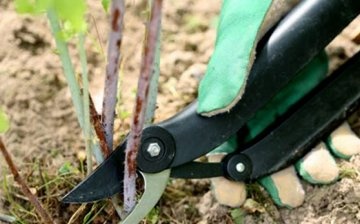
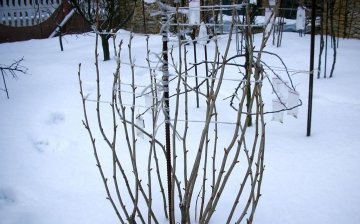

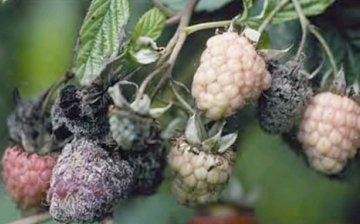





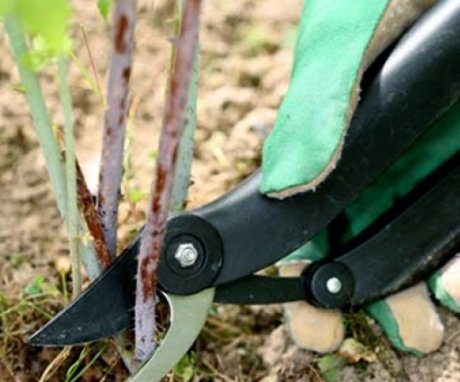
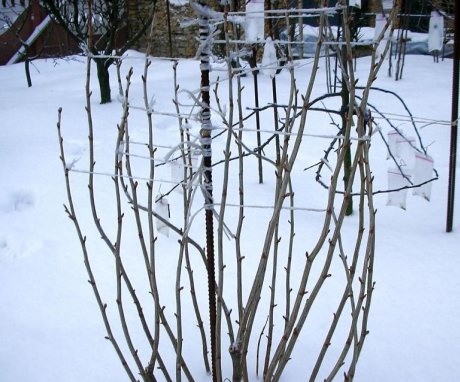
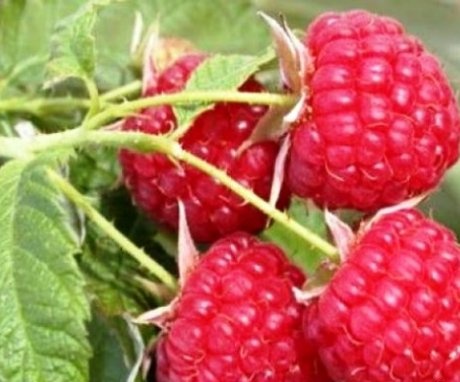
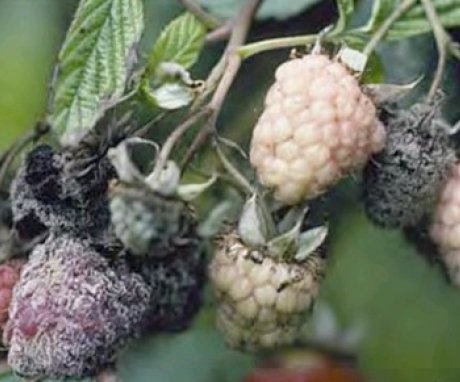
Our whole family loves raspberries very much! The main thing is to properly care for it in the fall and water it often during the flowering period (but without enthusiasm), then the raspberries will be large and sweet! Once a gray rot started, we did not eat raspberries that season. The next year, the watering was already regulated and this problem did not arise anymore.
I didn’t even know that there are so many nuances in caring for raspberries. We grow it in the garden, but to be honest, they didn’t take much care of it, they cut it off from time to time, and that’s all. We need to take care of it closely, maybe the harvest will be better.
We also have regular and remontant raspberries growing on our site. All care for her consists in pruning raspberries. We don't do anything else. The entire raspberry harvest for the season was just over 200 ML.
We bought ourselves a dacha on the outskirts of the Moscow region only two years ago, and in the first season we hardly managed to indulge in raspberries, but last summer we enjoyed a whole bucket of berries. Should we expect that in 2016 we will again be left without jam?